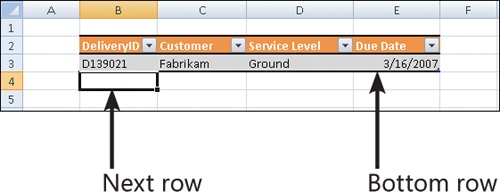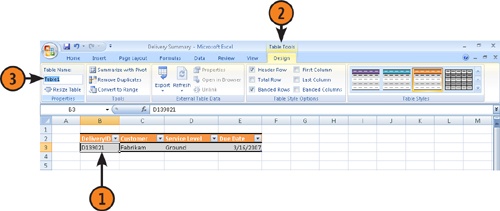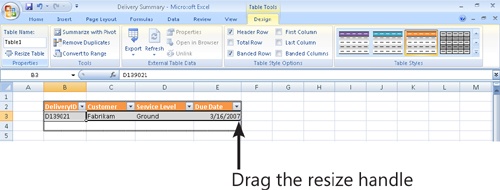One popular way to maintain data in Excel is by creating a table. A table describes one type of object, such as orders, sales, or contact information. Structurally, a table consists of a header row, which contains labels describing the data in each column, and data rows, which contain data about a particular instance of the table’s subject. For example, if you use a table to store your customer’s contact information, you could have a separate column for the customer’s first name, last name, street address, city, state, postal code, and telephone number. Each row in a table would contain a particular customer’s information.
Before Excel 2003, the program didn’t have a formal way of dealing with data tables. In Excel 2003 the programming team introduced lists, which were the precursor to tables, but lists didn’t have the full range of features realized with Excel 2007 data tables.
Click the cell at the bottom right corner of the data table and press Tab to create a new table row.
Type data into the cell below the bottom left corner of the data table and press Tab. Excel will make the new row part of the data table.
Try This!
Display a data table that takes up more than one screen vertically and scroll down the workbook page. When the table’s header row reaches the top of the screen, it freezes in place, but the data rows continue scrolling. Now you don’t have to remember which column is which; the labels are right there!





